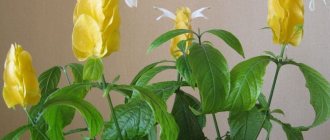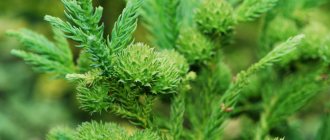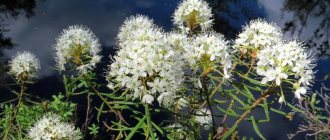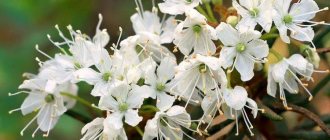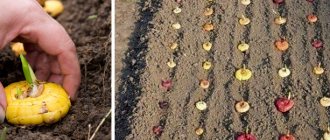Spiraea Wangutta photo and description of the shrub, size, planting and care will be described in this article.
Spiraea Vangutta is an ornamental flowering shrub that is often grown in garden plots. Many people love it for its spherical inflorescences that completely cover the branches. Breeders are developing new varieties and varieties, thanks to which the plant is gaining more and more popularity. The culture is unpretentious, but there are some rules for growing and caring that you need to know.
Description of the bush
A shrub with snow-white flowers is often used in landscape design, as it grows quickly and blooms beautifully, creating a beautiful appearance of the site in a short time. The plant blooms so profusely already in the first year that even green leaves are not visible under the inflorescences. That’s why people call it “May snow.”
Interesting! There is one name for spirea - meadowsweet. It is under this name that the plant has been known in Russia since 1868.
Crown height and diameter
The shrub grows to a height of about 2 meters, its branches bend in arcs towards the ground. The leaves are dark green, ovate, with serrated edges and 3.5 cm long.
The diameter of the crown of the bush also reaches 2 meters. Its shape is spreading, cascading. From afar, the bush resembles a white waterfall of delicate flowers.
Interesting! Some varieties grow up to 3 meters and are erect.
Bloom
The shrub looks very beautiful during the flowering period. If you follow all the rules for caring for the plant, it can delight you with flowering 2 times a season.
The first flowering lasts 2-3 weeks from mid-June to mid-July. Early varieties bloom in May.
The second flowering occurs in August. It is not so lush, but also very beautiful.
White flowers are collected in hemispherical inflorescences and are located along the entire length of the shoot.
Vangutta in landscape design
Spiraea is ideal for garden decoration. It is often used in landscape design in three versions:
- Near reservoirs - in this case, the bush resembles a weeping willow, but only with a cascade of snow-white flowers.
- As a green hedge. Spiraea is planted at a distance of 0.5 meters from each other.
- As a separately growing shrub in the center of a lawn or flower garden. It goes well with both flowering and decorative foliage plants. Snow-white flowers look great with conifers and against the background of a flower bed.
Varieties
Spiraea Vangutta looks different depending on the variety. There are more than a dozen varieties that differ in size, timing and duration of flowering.
Gold Fontaine
Spiraea Gold Fountain appeared due to a mutation of Spiraea Wangutta. It has more pronounced decorative properties. It is a compact spherical shrub up to 1.2 meters high with orange-reddish branches. The bush grows up to 1.5 meters in diameter. Gold Fontaine grows slowly, gaining 15-20 cm per season.
Young leaves turn orange-red in spring and change color to bright yellow in summer.
Advice! In order for the leaves to retain their golden color, the bush must grow in full sun. In the shade the foliage turns green.
There are many flowers. They are small, white, and collected in hemispherical inflorescences. They exude a fragrant, honey aroma. Such bushes are used for hedges, in single plantings and group compositions. Spiraea Gold Fontain is often used for urban landscaping. It is frost-resistant and can grow in any soil.
Pink Ice
Spiraea Pink Ice is a spherical shrub with variegated foliage and red branches. The bush grows up to 1.5-2 meters in height and width. Young leaves are creamy white, sometimes pinkish. As they grow, they become pale green with cream spots.
Pink Ice blooms in May-June with numerous small white flowers, collected in hemispherical inflorescences that completely cover the shoots. Looks beautiful in contrasting compositions, for example, with barberry. Grows well in soil with weak or alkaline acidity, in which water does not stagnate. It is frost resistant. But it can freeze at very low temperatures.
Renaissance
A hybrid of American selection that grows quickly and grows up to 1.5 meters in height and 2.0 meters in width. However, it is more compact than Spiraea Vangutta. There are many branches, they are slightly curved.
Blooms from April 15 to May 30 with creamy white flowers. The leaves are small with finely toothed edges and bluish-green in color.
Grows well in sunny areas. Has high immunity to diseases. It is frost resistant. Does not require constant pruning. Used in single plantings and mixed compositions.
Snow White (snow whait)
Snow White is a bush with a compact rounded crown that resembles a vase. Grows up to 120 cm in height and 150 cm in width. The branches are curved, the leaves are dark green, turning orange-red in the fall. In spring they bloom profusely with white flowers.
The shoots cascade down to the ground. Has good frost resistance. It is used for landscaping parks and squares, forming hedges in single plantings and mixed compositions. Grows well in sunny areas.
Appearance and biological features
Plants of this genus can grow both small (up to 15 cm) and tall (up to 2.5 m). The branches of the bush are erect or creeping. The color ranges from light to dark brown. The roots are shallow and fibrous. During flowering, spirea is covered with numerous small flowers in inflorescences of different shapes. The color of the petals ranges from snow-white to crimson. Spiraea inflorescences can be located throughout the shoot, or on its upper part or at the end of the branch. The plant propagates by seeds, cuttings, dividing the bush, and layering.
Spirea does not need pruning. It is carried out exclusively for decorative purposes, to give the bushes a more aesthetic appearance. The crown of a plant can be thick and dense or slightly “sparse”, but it always looks attractive. The branches bloom right down to the ground, so there is no unsightly “bare leg” effect.
The shrub is hardy, adapts well to various climatic conditions, so it can be grown not only in the south or in the middle zone, but also in the northern regions. If the spirea freezes slightly in severe frosts, then after pruning it is completely restored and blooms in the same year. For normal development of the plant, a few hours a day of direct sun, fertilizing, and good soil are enough. You don’t have to cover it for the winter
Spiraea blooms on shoots that grow during the same year, so pruning does not spoil its appearance
Growing Spiraea Wangutta
Spiraea prefers to grow in well-lit areas.
Priming
Prefers fertile, loose, drained soil with neutral acidity. However, it grows well in any soil. To plant plants, dig a large hole. Drainage made of crushed stone, expanded clay, and broken brick is poured onto the bottom.
Planting process and scheme
Spiraea with an open root system is best planted in the fall.
Important! Planting is carried out depending on the region in September, sometimes before October 15.
The main thing is that the weather is cloudy and the soil is moist.
Advice! If autumn is not rainy, the bush should be watered often.
Planting can also be done in early spring. When sap flow has not yet begun.
With a closed root system, plants can be planted throughout the season.
If the soil is loose and drained, a hole is dug to a depth of 40-50 cm and 25-30% more roots.
If the soil is heavy, clayey and water can stagnate in it, a hole is dug 2-3 times larger than the spirea root system. A drainage layer is laid at the bottom. And the seedling is covered with a specially prepared substrate:
- 1 part coarse river sand;
- 1 part peat;
- 2 parts leaf soil;
- 1 part rotted manure.
Vangutta spirea bushes leave different distances between them. Depending on the beginning of flowering and purpose.
Summer bloom:
- In group plantings – 50-70 cm.
- For a hedge - 40-50 cm.
- With 2 rows between rows - 30-40 cm.
Spring-flowering:
- For a hedge – 70-100 cm.
- In group plantings - 100-150 cm.
The day before planting, the roots of the seedling are soaked in a solution of growth stimulator Epin or Zircon and fungicide.
During planting, soil is poured into a hill at the bottom of the hole, a seedling is placed on it, and the roots are straightened. The hole is filled with substrate, compacted and watered.
Watch the video! Spiraea: how to plant correctly
Planting and care
Spring and autumn are suitable times for planting spirea seedlings. In autumn it is better to do this at the moment the leaves fall, and in spring at the beginning of sap flow. It will be better if the seedlings form a closed root system before planting. Next, you need to follow the tips below.
Also learn how to plant and care for spirea.
How to choose a place
An area with dry sandy soil is suitable for planting. Its illumination is almost the main nuance of choosing a location. Only in open areas can one expect abundant and regular flowering of the shrub. Lowlands, where a lot of rainwater and snow accumulate, are not suitable for its habitat.
Don’t forget to take into account the size of the plant’s crown in adulthood. Vangutta does not like harassment, because although it is superficial, it has a rather spreading root system. Choose a minimum distance between bushes of at least 1.5 m.
Vangutta prefers fertile, rich, breathable, light and loose soil. Its pH level should not exceed 7 units.
It is best to choose turfy, leafy soil. If there is none on the site, then prepare the soil mixture yourself. To do this, mix 1 part peat, sand and 2 parts turf soil.
Here are some other ways to adjust the soil on your site:
- In loam, chernozem, which is considered a fatty, heavy soil, be sure to add peat or sand.
- Feed depleted soil with organic and mineral fertilizers.
- Correct highly acidic soil with wood ash or lime.
Planting scheme
To obtain seedlings, cuttings are most often used, because seed germination is only 5%. The petioles take root well, so they can be rooted in spring and autumn. They take root quickly and do not freeze out.
We invite you to familiarize yourself with information about the peculiarities of growing spirea in the Urals.
In areas of the middle zone and northern latitudes, spring planting of young bushes is used. Young, strong specimens with swollen buds are suitable for this. It is important that they do not bloom yet before planting.
Below is a suggested spring planting scheme:
- Choose a suitable location for the holes, dig holes 50 cm deep and wide with a distance of at least 1.5 m between them.
- Leave the dug holes for several days to air.
- Before planting, soak the root system of the seedlings in water, carefully inspecting it and removing damaged areas.
- If the soil is loamy, then add expanded clay or broken brick as drainage in a layer of 15–20 cm.
- Lower the seedlings into the holes and cover with earthen mixture.
- Make sure that the root collar of the bushes is level with the ground.
- Lightly compact the soil and water generously with 1-2 buckets of water.
- Apply peat mulch in a layer of 5–10 cm.
In addition to breeding seedlings by cuttings, propagation by layering is used. The method is used in the spring, when leaves begin to bloom on the branches. To do this, select several shoots from the bush, bend them to the ground, deepen them a little and fill the joint with soil.
To prevent the shoots from growing, but from taking root, their tops are cut off. Water the rooting site as needed. By autumn, such a plant will take root and will be ready to be transplanted to a permanent location.
Video: Planting spirea Vangutta
Fertilizers
Fertile soil for spirea does not require more than one fertilizing per year. Poor soil should be fed twice: before flowering and before autumn pruning. To do this, use both organic and mineral fertilizers. Apply organic matter after trimming the bushes. Let chicken or cow manure soak in water for a week.
Did you know? Ancient Russians made whips from spirea shoots. Over time, they were used to make ramrods for guns.
For 1 liter of litter add 10 liters of water. Apply fertilizer in the evening after you have watered the plant thoroughly. A young plant needs 0.5 buckets of this fertilizer, and an adult plant needs up to 20 liters.
In the spring, before flowering, apply mineral fertilizers. It will be better if you buy special complex mixtures: “Sudarushka”, “Plantafol”, “Azofoska”, “Master”. Apply them to the root zone at the rate of 60 g per 1 m².
Pruning after flowering
Vangutta needs annual careful pruning, otherwise the bush will lose its shape. There may be pressure from the upper branches on the lower ones. Untimely pruning leads to weakening and thinning of young shoots.
Important! For abundant flowering next year, it is necessary to carry out light pruning after the inflorescences wither. This will promote the development of new flower buds on the branches.
Vangutta blooms in early summer, so prune it in the spring. Thin out the bushes for the first time when they are 4 years old. After the winter awakening, trim the ends of the shoots that are frozen. Don't be afraid to remove thin, weak stems. Carry out a radical pruning when the bushes are 7 years old, and then only remove the old branches. Trim them at soil level.
Watering and humidity
The lush spreading branches of the vangutta prevent it from drying out. Just don’t wait until the soil near the roots hardens and cracks, because then there will definitely not be lush flowering. Water the bushes regularly, but not abundantly. An adult plant needs 2 waterings per month, a bucket of water.
In severe drought, the frequency of moisturizing can be increased to 3-4 times a month. Young bushes also require more frequent watering. Soft, warm, settled water is suitable for this. After watering, cover the root zone with a layer of mulch in the form of sawdust, peat or hay.
Care instructions
For active growth and abundant flowering, spirea must be properly cared for: watered, fertilized, pruned, protected from diseases and pests.
Watering
Regular removal of weeds and loosening of the soil will help improve soil moisture during watering and the absorption of fertilizers during fertilizing.
Advice! By mulching the root zone of the spirea with a layer of 10 cm, there will be no need to loosen and weed the soil.
The plant does not like stagnation of water at the roots, so the frequency of watering is chosen depending on the composition of the soil. Usually the bushes are watered 3-4 times a month, and more often during drought.
You should also spray the crown with warm water. This will improve the growth of the plant.
Fertilizer
If, when planting, the spirea was covered with a nutrient substrate, it does not need to be fertilized for the first year. Next, feed the bushes with complex phosphorus-potassium fertilizer once a season. The tree trunk circle is mulched with organic matter, for example, rotted manure.
Trimming
In order for spirea to bloom beautifully, it is necessary to form a crown and carry out sanitary cleaning. Remove dried, old and diseased branches, leaves and inflorescences.
Advice! In order for the plant to overwinter well, pruning must be done before the onset of cold weather.
During the season, 2-4 prunings are carried out, which spirea tolerates well.
Remember that spirea blooms on the branches of the second year. Therefore, you need to leave 1-2 strong buds on them.
Watch the video! How to trim VANGUTTA sperry
Perennial pruning
Regular pruning of Vangutta spirea is an important agrotechnical manipulation during plant care. Thanks to pruning, you can form the desired crown and also stimulate the formation of inflorescences.
Autumn pruning is carried out from September to October, when the bush has completed flowering.
- You will need to remove damaged, dry branches, shorten long branches and the tops of frozen shoots. This is how they prune so that in the spring the bush begins to develop with new vigor;
- When pruning, you must remember that flowering is possible only on the branches of last year’s shoots, so they cannot be completely shortened;
- In spring, sanitary pruning is carried out before sap flow begins;
- If the perennial is more than 7 years old, then anti-aging pruning is carried out. In this case, all old and thickening branches of the bush that inhibit its growth are mercilessly removed.
Do not be afraid of drastic pruning - new shoots will appear next year, on which inflorescences will form in a year.
If radical pruning is not done to old bushes, they will become like thickets with few and small inflorescences.
When formative pruning of a bush, its width is also taken into account. The diameter of the crown of the Vangutta spirea is often greater than its height. When pruning shoots, take this fact into account. To form the desired crown, for example, a spherical one, it is necessary to remove part of the shoots that grow in width. Beginning gardeners use templates when cutting a shaping haircut to give the bush the required shape.
Preparing for winter
Spiraea is a frost-resistant plant that does not need to be covered for the winter. They can survive even in temperatures down to -40 °C.
It is recommended to cover the shrub in regions with cold winters, where frosts drop below -35–40 °C. Cover the root zone with dry leaves, film and other insulation materials. If some shoots freeze during the winter, they are cut off in the spring so that the spirea does not waste its energy on them.
Advice! During the first winter, it is recommended to cover young seedlings so that they take root well and survive the winter.
Peculiarities
Among the low-growing representatives of Japanese spirea, "Anthony Waterer" is revered by gardeners and designers for its unpretentiousness and high agrotechnical qualities. Despite its elegance and beauty, this variety is able to withstand urban pollution, moderate drought, severe frosts, and grow on infertile land. Let's look at a brief description of the variety. "Anthony Waterer" is a compact bush with a dense spreading crown, the height of which is no more than 1 m and the same in diameter. The variety is valued for its long flowering from mid-June to September with bright pink with a purple tint or bright crimson large inflorescences up to 15 cm. Anthony Waterer stands out from its fellows not only with beautiful flowers, but also with decorative foliage.
The plant is winter-hardy and can tolerate frosts down to -50 degrees. In severe winters, as well as in the absence of snow cover, the tips of the shoots may freeze. However, the variety recovers very well. But the shrub should be planted in protected places from cold winds. Annual spring pruning should be carried out to form the correct crown and the formation of young shoots. Deciduous shrub.
Reproduction of spirea
Spiraea Wangutta is propagated in the following ways:
- seeds;
- cuttings;
- bends;
- dividing the bush.
Seeds
Spiraea is rarely propagated by seeds, as they do not germinate well. Sow exclusively fresh seeds in a mini-greenhouse in early spring. With proper care, seedlings will appear in 10-14 days.
They pick them up after 2-3 months. They are planted in open ground the next season, when the root system of the bush has become stronger.
Cuttings
2 weeks after flowering, cuttings are cut from strong semi-lignified shoots. They are stuck into containers with peat and sand for rooting.
The plantings are covered with film to create a greenhouse effect.
Interesting! When new young leaves appear, the cuttings have taken root.
Ready seedlings are transplanted into separate pots. The seedlings are transplanted into open ground after a year.
Watch the video! How to grow spirea from cuttings
Bends
The easiest method of propagating spirea. In early spring, a powerful semi-lignified shoot near the ground is laid out in a pre-dug trench, leaving the top above the surface. The shoot is fixed with a staple and covered with soil. It is watered throughout the season and mulched for the winter.
In the spring, the already rooted branch is disconnected from the bush and transplanted to a permanent place.
Dividing the bush
This method is used when replanting a plant. The bush is dug up and divided into several parts, leaving a strong root system and developed shoots on the sections. All cuts are treated with charcoal and planted in a new place.
Landscape designers choose Wangutta
Experts know how impressive a breeding variety can look on a plot:
- Decorative hedge. Spiraea Vangutta, used as a hedge, will protect a garden or summer cottage from the street and at the same time become its decoration;
- On the shore of an artificial reservoir, the plant is used as a willow substitute.
- A lonely growing spirea bush of this species looks great on a lawn or flowerbed.
Both professionals and amateur gardeners are convinced: any variety of Wangutta spirea will suit a wide variety of areas and will bring pleasure to their owners.
Diseases and pests
Spiraea can get sick if not cared for properly. It can be attacked by aphids, sawflies and gall midges. For control and prevention, bushes are sprayed with a solution of insecticides - Aktara, Aktellik, Enzhio.
It is necessary to monitor the level of humidity and acidity of the soil, otherwise fungal diseases will appear. They are fought with systemic fungicides - Infinito, Falcon or contact preparations with copper, for example, Medyan Extra.
Watch the video! Flowering ornamental shrubs. SPIRAEA VANGUTTA
Caring for spirea is as easy as shelling pears
To make the shrub look attractive, it is pruned and a crown is formed. Bushes with spherical and pyramidal shapes are very beautiful. The specific “haircut” is chosen by the owner, focusing on the general style of the site’s design. Pruning does not affect the development of the plant. Weak and old (7-14 years) branches should be removed. They are cut down to the stump. It is better to trim the crown in the spring, before the leaves appear. If pruned in mid-summer, the spirea may bloom again in the fall.
After pruning, the soil is watered with manure diluted in water. The mixture should be poured under the roots. You can also fertilize with a superphosphate solution. Proportions: 8-10 g of fertilizer per 10 liters of water. Kemira Universal is also suitable. For 1 sq.m. add 100 g of granular product. Spiraea does not need intensive watering; it is enough to maintain the plant during periods of drought. 1-2 buckets of water is enough for the normal life of the bush. For the winter, the roots can be covered with a 10-15 cm layer of foliage.
Spiraea can do without pruning, but it is still better to trim it regularly to achieve a beautiful appearance and good health of the plant.
Spiraea is susceptible to fungal diseases - ascochyta blight, ramularia blight, septoria blight. They can be identified by the appearance of spots. It is recommended to spray the plant with Bordeaux mixture, Fundazol or colloidal sulfur. The main thing is to treat the shrub before or after flowering.
The most unpleasant pests can be spider mites and aphids. Signs of the mite’s “work” are the appearance of holes on the leaves, their withering and falling, cobwebs. You can cope with the pest by spraying with phosphamide or karbofos. The presence of aphids can be determined by bitten off and wilted inflorescences. To combat aphids, use pirimor or similar products.
Spiraea can be attacked by snails. You can learn how to deal with them from the video, which describes the features of pruning and caring for the plant.
Author: Natalya Category: Garden plants Published: February 23, 2022 Updated: March 28, 2019
Spiraea Vanhouttei (lat. Spiraea x vanhouttei) is a fast-growing ornamental shrub of the Rosaceae family, a deciduous hybrid between three-lobed spirea and Cantonese spirea. Spiraea Vangutta has been cultivated since 1868.



